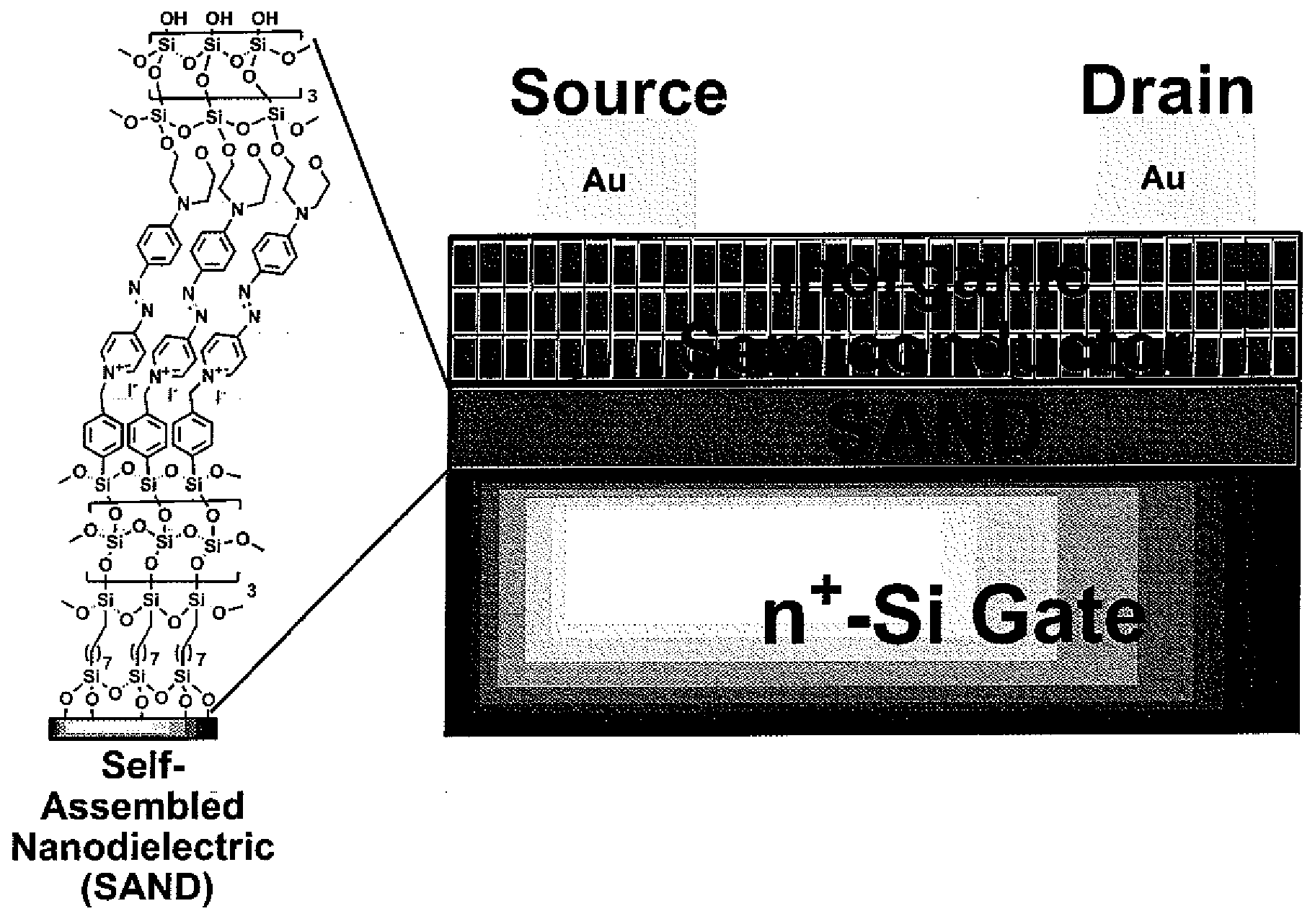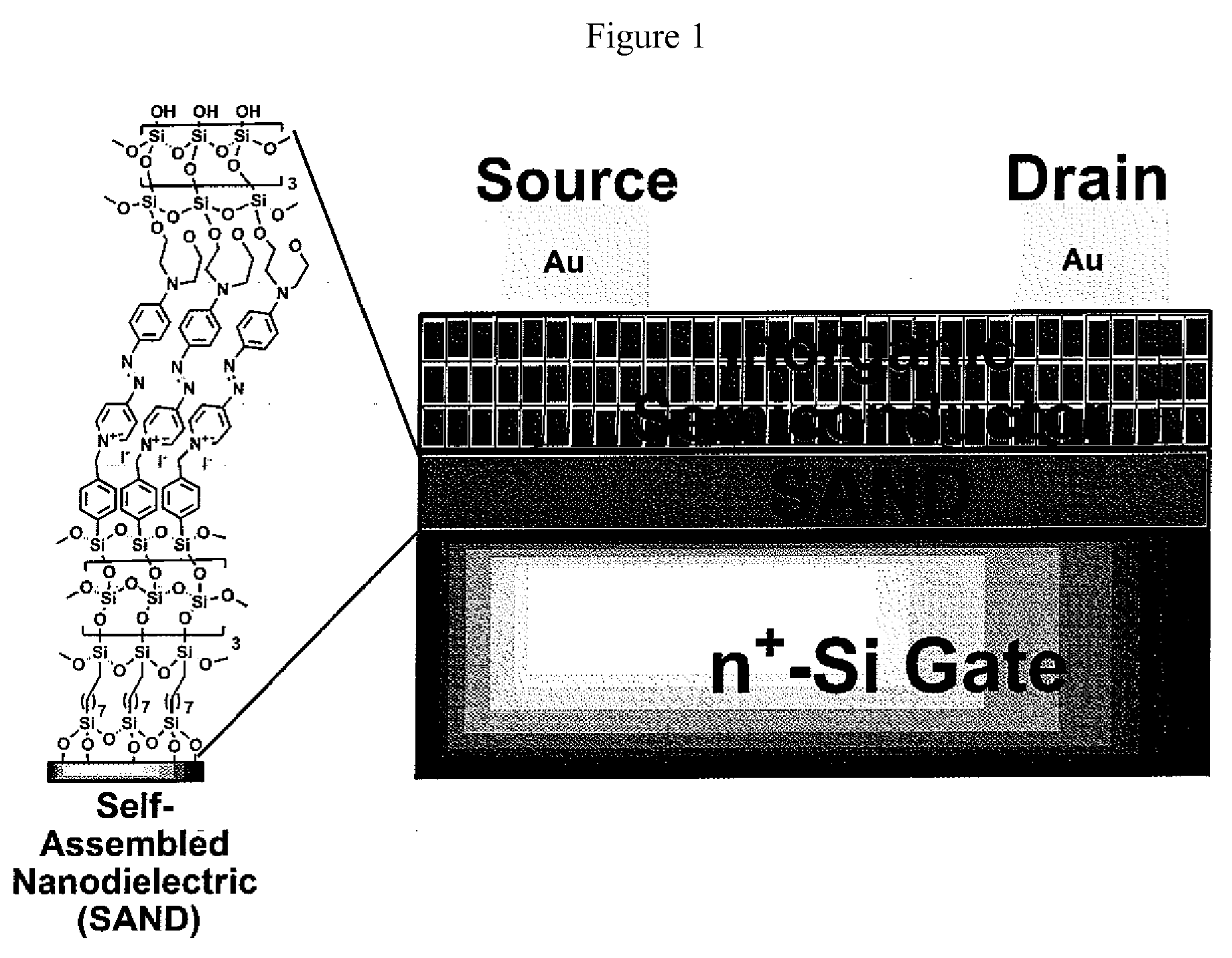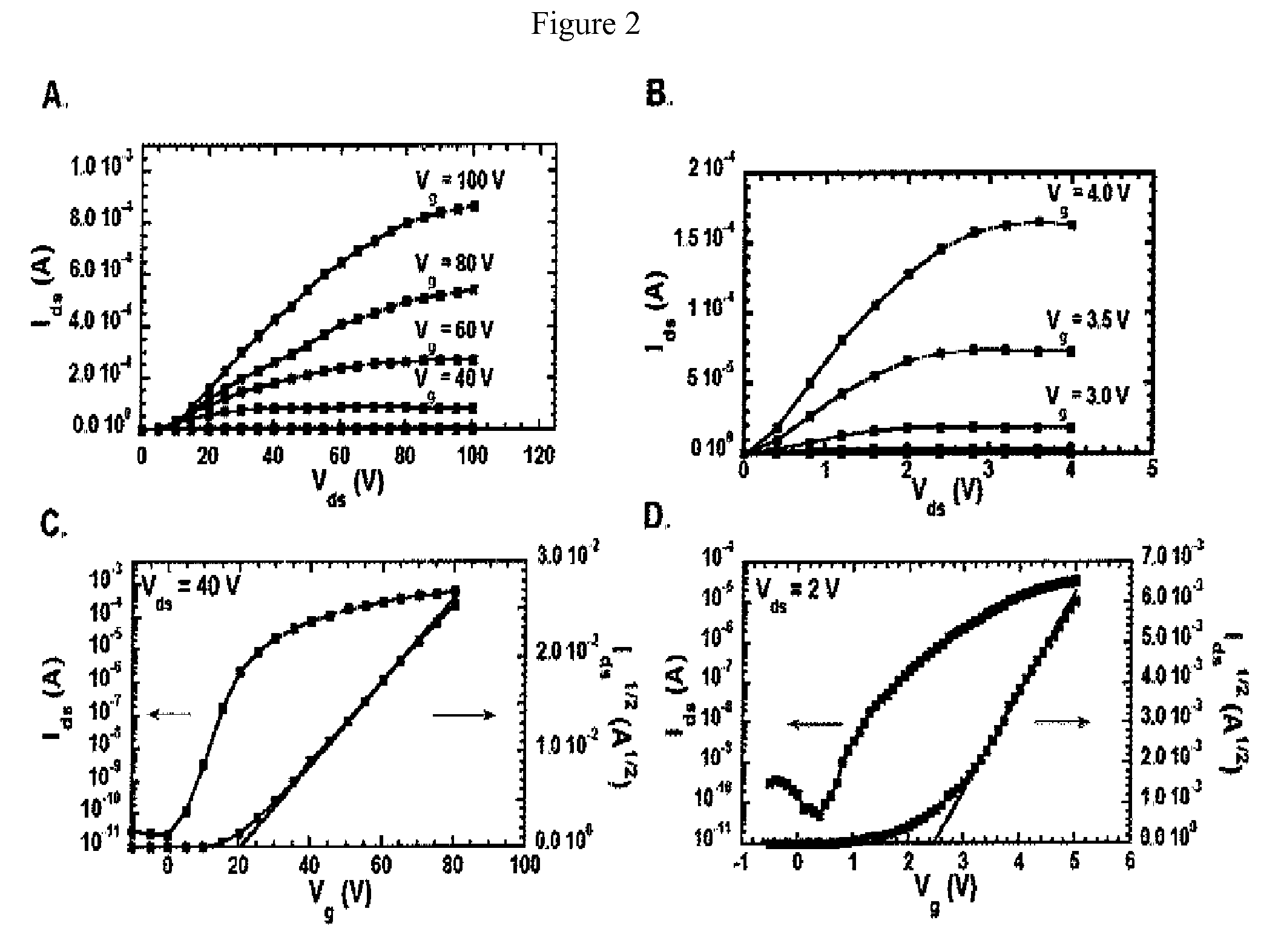Solution-processed high mobility inorganic thin-film transistors
a technology of inorganic thin films and transistors, which is applied in the direction of transistors, electrical devices, semiconductor devices, etc., can solve the problems of limiting the temperature at which the semiconductor films are deposited, the high annealing temperature is incompatible with inexpensive plastic substrates, and the solution-processed high-speed circuits. achieve enhanced texturing, improve surface morphology, and enhance the effect of properties
- Summary
- Abstract
- Description
- Claims
- Application Information
AI Technical Summary
Benefits of technology
Problems solved by technology
Method used
Image
Examples
example 1a
CdSe Film Deposition
[0084]The reagents CdCl2, Se, and Na2SO3 were purchased from Aldrich Chemicals and were used without further purification. The aqueous ammonia (28-30%) solution was purchased from Mallinckrodt Baker. The water used in all the deposition steps was purified with a Millipore nanopure water system. The Na2SeSO3 solution was prepared from 0.37 g (4.7 mmol) of Se in 40 mL of a 0.2 M (7.9 mmol) Na2SO3 solution which was heated at 60° C. for 1.5 h in a water bath to from the Na2SeSO3. The undissolved Se was then removed by filtration with filter paper and resulting filtrate used in the CBD solution. The CBD solution was prepared from 20 mL of ˜0.1 M aqueous CdCl2, 6.0 ml concentrated NH4OH, and 20 mL of 0.1 M aqueous Na2SeSO3 solution. This solution was then heated to 80° C. using a water bath. After the solution became orange, the substrates (7×2.5 cm) loaded into a glass holder and were immersed in the CBD solution. The substrates were initially placed in the solution ...
example 1b
[0085]For patterning of the semiconductor film growth, solutions of the polystyrene (Mw=250 K) and polymethyl methacrylate (350 K) were brushed onto the substrates to define deposition regions on the Si substrate. The concentration of the polymer solutions was 100 mg / mL in toluene and TFT for polystyrene and polymethyl methacrylate, respectively. After 20 min of air drying, the patterned substrates were heated (65° C.) under vacuum for 1 h. CBD of the CdSe was then performed. Following the nanopure water washings, the CdSe coated substrates were sonicated three times in 50 mL of THF for 5 min and subsequently washed twice in nanopure water for 5 min. This procedure results in 12 mm patterned CdSe films.
example 2
Zinc Indium Oxide Film Deposition
[0086]A 0.1 M solution of zinc acetate (Zn(OAC)2) in 2-methoxy-ethanol was prepared. The compound 2-amino-ethanol was added to the solution in a 1:1 ratio with the Zn(OAC)2 to increase the Zn(OAC)2 solubility to afford a solution concentration of 0.1 M. A 0.1 M solution of InCl3 in was also prepared 2-methoxy-ethanol. The spin-casting solution was prepared by mixing 0.5 ml of the InCl3 solution and 0.5 ml of the Zn(OAC)2 solution. The precursor film was then spun cast at 1500 rpm. The precursor film was then pre-annealed at 180° C. for 10 min and then a second coat of ZIO was spun-cast and pre-annealed the ZIO film was then annealed at 400° C. for 30 min.
PUM
 Login to View More
Login to View More Abstract
Description
Claims
Application Information
 Login to View More
Login to View More - R&D
- Intellectual Property
- Life Sciences
- Materials
- Tech Scout
- Unparalleled Data Quality
- Higher Quality Content
- 60% Fewer Hallucinations
Browse by: Latest US Patents, China's latest patents, Technical Efficacy Thesaurus, Application Domain, Technology Topic, Popular Technical Reports.
© 2025 PatSnap. All rights reserved.Legal|Privacy policy|Modern Slavery Act Transparency Statement|Sitemap|About US| Contact US: help@patsnap.com



